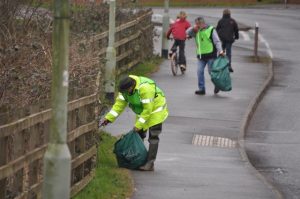 Despite public opinion, the police really don’t like locking people up in prison. The police and the court system have a lot of other ways of dealing with low-level offending. These ways are designed to avoid criminal records, and stop the courts system becoming cluttered with minor cases. Most of us have heard of community service. Offenders take part in a litter pick, or paint a community centre. One of the newest ways of dealing with low-level crime is community resolution. But what exactly is this, and how will it be shown on future DBS checks?
Despite public opinion, the police really don’t like locking people up in prison. The police and the court system have a lot of other ways of dealing with low-level offending. These ways are designed to avoid criminal records, and stop the courts system becoming cluttered with minor cases. Most of us have heard of community service. Offenders take part in a litter pick, or paint a community centre. One of the newest ways of dealing with low-level crime is community resolution. But what exactly is this, and how will it be shown on future DBS checks?
What Does Community Resolution Mean?
Unlike fines, prison or even community service, community resolution is outside the criminal justice system. It’s a way of dealing with matters before it gets to that stage. There are lots of different things which could fall under the banner of community resolution. Police might ask an offender to write a letter of apology to their victim. Someone caught painting graffiti on a building may be asked to clean it off. It’s a way of dealing with things quickly and easily. Many police forces across the country use community resolution. It is most commonly used for first time offenders. Community resolution is only used for minor offences.
As this sort of sanction isn’t a “criminal conviction”, it also gives people the chance to make a fresh start. Usually, police forces only allow people to go through community resolution twice. On the third offence, the police revert to more traditional punishments. Victims can also give their opinion about what should happen to someone who has committed a crime against them.
Types of Community Resolution
There are five main types of community resolution available to the police. They will make the decision about what to do depending on the circumstances. The options are:
- Restorative Justice meeting – this brings together the police, the offender and the victim. Both sides get the chance to discuss the incident and how it affected them. Offenders must participate fully in the process. They can’t just sit quietly, saying nothing.
- Warning and Agreement – this is usually used in anti-social behaviour cases. Offenders sign a behaviour agreement, which sets out what they can and cannot do.
- Reparation – this is similar to community service. Offenders either offer financial compensation, or carry out some sort of work to make amends for what they did.
- Rehabilitation – if the offender has drug or alcohol problems which have caused their criminal behaviour, the police might send them to another agency which offers rehab facilities.
- Victim awareness course – this is a course run by the police and designed to show offenders the impact of their crimes on the victims.
Will it show on DBS checks?
There are dozens of reasons why someone might have to apply for a DBS check. The most common scenario is applying for a job, especially one involving children or vulnerable adults. Basic disclosures show current offences only. Standard and enhanced disclosures show more detail. However, this sort of check is only done in connection with a specific job. As a community resolution isn’t a conviction, it won’t show up on a basic disclosure check. If you are applying for a more detailed disclosure it might, depending on the circumstances.
“Other Information” on DBS Checks
Being asked to apologise or remove graffiti through a community resolution order isn’t an offence and won’t appear on the criminal record section of DBS checks. However, the police have a bit more flexibility over what other information they list. It’s all a bit of a balancing act. On one hand, the police have to protect vulnerable people in society. On the other hand, they also want to give people a second chance and allow them to leave a dodgy past behind them. In general, the police err on the side of giving people a second chance. The only exception to this is when the offence is directly corrected to the type of job you are applying for.
If you have a chequered past, it’s usually best to be open and honest. Most employers will be more interested in what you’ve been doing recently than what you got up to as a teenager. If you can show that you’ve been a reliable, responsible employee for many years, then you have nothing to worry about.